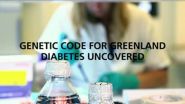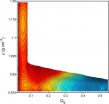(Press-News.org) More than 5 million Americans suffer from Alzheimer's disease, the affliction that erodes memory and other mental capacities, but no drugs targeting the disease have been approved by the U.S. Food and Drug Administration since 2003. Now a paper by an MIT professor suggests that a revamped way of financing Alzheimer's research could spur the development of useful new drugs for the illness.
"We are spending tremendous amounts of resources dealing with this disease, but we don't have any effective therapies for it," says Andrew Lo, the Charles E. and Susan T. Harris Professor of Finance and director of the Laboratory for Financial Engineering at the MIT Sloan School of Management. "It really imposes a tremendous burden on society, not just for the afflicted, but also for those who care for them."
Lo and three co-authors propose creating a public-private partnership that would fund research for a diverse array of drug-discovery projects simultaneously. Such an approach would increase the chances of a therapeutic breakthrough, they say, and the inclusion of public funding would help mitigate the risks and costs of Alzheimer's research for the private sector.
There would be a long-term public-sector payoff, according to the researchers: Government funding for Alzheimer's research would pale in comparison to the cost of caring for Alzheimer's sufferers in public health-care programs. The paper's model of the new funding approach calls for an outlay of $38.4 billion over 13 years for research; the costs of Medicare and Medicaid support for Alzheimer's patients in 2014 alone is estimated to be $150 billion.
"Having parallel development would obviously decrease the waiting time, but it increases the short-run need for funding," Lo says. "Given how much of an urgent need there is for Alzheimer's therapies, it has to be the case that if you develop a cure, you're going to be able to recoup your costs and then some." In fact, the paper's model estimates a double-digit return on public investment over the long run.
Lo adds: "Can we afford it? I think a more pressing question is, 'Can we afford not to do something about this now?'"
Modeling the odds of success
The paper, "Parallel Discovery of Alzheimer's Therapeutics," was published today in Science Translational Medicine. Along with Lo, the co-authors of the piece are Carole Ho of the biotechnology firm Genentech, Jayna Cummings of MIT Sloan, and Kenneth Kosik of the University of California at Santa Barbara.
The main hypothesis on the cause of Alzheimer's involves amyloid deposition, the buildup of plaques in the brain that impair neurological function; most biomedical efforts to tackle the disease have focused on this issue. For the study, Ho and Kosik, leading experts in Alzheimer's research, compiled a list of 64 conceivable approaches to drug discovery, addressing a range of biological mechanisms that may be involved in the disease.
A fund backing that group of research projects might expand the chances of developing a drug that could, at a minimum, slow the progression of the disease. On the other hand, it might not increase the odds of success so much that pharmaceutical firms and biomedical investment funds would plow money into the problem.
"Sixty-four projects are a lot more than what's being investigated today, but it's still way shy of the 150 or 200 that are needed to mitigate the financial risks of an Alzheimer's-focused fund," Lo says.
The model assumes 13 years for the development of an individual drug, including clinical trials, and estimates the success rates for drug development. Given 150 trials, the odds of at least two successful trials are 99.59 percent. Two successful trials, Lo says, is what it would take to make the investment — a series of bonds issued by the fund — profitable and attractive to a broad range of investors.
"With a sufficiently high likelihood of success, you can issue debt to attract a large group of bondholders who would be willing to put their money to work," Lo says. "The enormous size of bond markets translates into enormous potential funding opportunities for developing these therapeutics."
Stakeholders everywhere
To be clear, Lo says, Alzheimer's drug development is a very difficult task, since researchers often have to identify a pool of potential patients well before symptoms occur, in order to see how well therapies might work on delaying the onset of the disease.
Compared with the development of new drugs to treat other diseases, "Alzheimer's drug development is more expensive, takes longer, and needs a larger sample of potential patients," Lo acknowledges.
However, since the number of Americans suffering from Alzheimer's is projected to double by 2050, according to the Alzheimer's Association, an advocacy group, Lo stresses the urgency of the task at hand.
"I see myself as a future patient, or a family member of a future patient," Lo observes. "We all have a stake in this."
INFORMATION:
Written by Peter Dizikes, MIT News Office
Additional background
ARCHIVE: How better financing could help create new cancer drugs
http://newsoffice.mit.edu/2012/how-better-financing-could-help-create-new-cancer-drugs-1004
How a new approach to funding Alzheimer's research could pay off
Model indicates that diverse research approaches to the disease would be a rewarding investment
2014-06-18
ELSE PRESS RELEASES FROM THIS DATE:
Maybe birds can have it all: Dazzling colors and pretty songs
2014-06-18
ITHACA, N.Y. – A study of one of the world's largest and most colorful bird families has dispelled a long-held notion, first proposed by Charles Darwin, that animals are limited in their options to evolve showiness. The study – the largest of its kind – was published today in the Proceedings of the Royal Society B.
The natural world is full of showstoppers – birds with brilliant colors, exaggerated crests and tails, intricate dance routines, or virtuosic singing. But it's long been thought that these abilities are the result of trade-offs. For a species to excel in one ...
Demand for diabetes, thyroid care outpaces supply of endocrinologists
2014-06-18
Washington, DC—As more people are diagnosed with diabetes and other hormone conditions, a growing shortage of endocrinologists could force patients to wait longer to see a doctor, according to a new Endocrine Society workforce analysis published in the Journal of Clinical Endocrinology & Metabolism (JCEM).
Endocrinologists are specially trained physicians who diagnose diseases related to the glands. They specialize in treating diabetes, obesity, osteoporosis, thyroid disorders, adrenal diseases, and a variety of other conditions related to hormones.
The analysis found ...
Scientists take first dip into water's mysterious 'no-man's land'
2014-06-18
Scientists at the Department of Energy's SLAC National Accelerator Laboratory have made the first structural observations of liquid water at temperatures down to minus 51 degrees Fahrenheit, within an elusive "no-man's land" where water's strange properties are super-amplified.
The research, made possible by SLAC's Linac Coherent Light Source (LCLS) X-ray laser and reported June 18 in Nature, opens a new window for exploring liquid water in these exotic conditions, and promises to improve our understanding of its unique properties at the more natural temperatures and ...
UEA researchers discover Achilles' heel in antibiotic-resistant bacteria
2014-06-18
Scientists at the University of East Anglia have made a breakthrough in the race to solve antibiotic resistance.
New research published today in the journal Nature reveals an Achilles' heel in the defensive barrier which surrounds drug-resistant bacterial cells.
The findings pave the way for a new wave of drugs that kill superbugs by bringing down their defensive walls rather than attacking the bacteria itself. It means that in future, bacteria may not develop drug-resistance at all.
The discovery doesn't come a moment too soon. The World Health Organization has warned ...
Identifying opposite patterns of climate change between the middle latitude areas
2014-06-18
Korean research team revealed conflicting climate change patterns between the middle latitude areas of the Northern and Southern Hemispheres in relation to glacial and interglacial cycles which have been puzzled for the past 60 years.
Doctor Kyoung-nam Jo from the Quaternary Geology Department of the Korea Institute of Geoscience and Mineral Resources(KIGAM) revealed a clue for solving the riddle of past global climate change in his paper titled 'Mid-latitudinal interhemispheric hydrologic seesaw over the past 550,000 years' which was featured in the journal Nature.
This ...
Evolutionary biology: Why cattle only have 2 toes
2014-06-18
During evolutionary diversification of vertebrate limbs, the number of toes in even-toed ungulates such as cattle and pigs was reduced and transformed into paired hooves. Scientists at the University of Basel have identified a gene regulatory switch that was key to evolutionary adaption of limbs in ungulates. The study provides fascinating insights into the molecular history of evolution and is published by Nature today.
The fossil record shows that the first primitive even-toed ungulates had legs with five toes (=digits), just like modern mice and humans. During their ...
Scientists break the genetic code for diabetes in Greenland
2014-06-18
VIDEO:
New Danish genetics research explains the high incidence of type 2 diabetes in the Greenlandic population. The ground-breaking findings have just been published in the prestigious scientific journal Nature....
Click here for more information.
A spectacular piece of detective work has mapped a special gene variant among Greenlanders which plays a particularly important role in the development of type 2 diabetes. The results have been published in Nature and can be ...
Familiar yet strange: Water's 'split personality' revealed by computer model
2014-06-18
Seemingly ordinary, water has quite puzzling behavior. Why, for example, does ice float when most liquids crystallize into dense solids that sink?
Using a computer model to explore water as it freezes, a team at Princeton University has found that water's weird behaviors may arise from a sort of split personality: at very cold temperatures and above a certain pressure, water may spontaneously split into two liquid forms.
The team's findings were reported in the journal Nature.
"Our results suggest that at low enough temperatures water can coexist as two different ...
Collecting light with artificial moth eyes
2014-06-18
Rust – iron oxide – could revolutionise solar cell technology. This usually unwanted substance can be used to make photoelectrodes which split water and generate hydrogen. Sunlight is thereby directly converted into valuable fuel rather than first being used to generate electricity. Unfortunately, as a raw material iron oxide has its limitations. Although it is unbelievably cheap and absorbs light in exactly the wavelength region where the sun emits the most energy, it conducts electricity very poorly and must therefore be used in the form of an extremely thin film in ...
Breathalyzer test may detect deadliest cancer
2014-06-18
Lung cancer causes more deaths in the U.S. than the next three most common cancers combined (colon, breast, and pancreatic). The reason for the striking mortality rate is simple: poor detection. Lung cancer attacks without leaving any fingerprints, quietly afflicting its victims and metastasizing uncontrollably – to the point of no return.
Now a new device developed by a team of Israeli, American, and British cancer researchers may turn the tide by both accurately detecting lung cancer and identifying its stage of progression. The breathalyzer test, embedded with a "NaNose" ...
LAST 30 PRESS RELEASES:
Sports injuries sustained during your period might be more severe
World's first successful 2 Tbit/s free-space optical communication using small optical terminals mountable on satellites and HAPS
Can intimate relationships affect your heart? New study says ‘yes’
Scalable and healable gradient textiles for multi‑scenario radiative cooling via bicomponent blow spinning
Research shows informed traders never let a good climate crisis go to waste
Intelligent XGBoost framework enhances asphalt pavement skid resistance assessment
Dual-function biomaterials for postoperative osteosarcoma: Tumor suppression and bone regeneration
New framework reveals where transport emissions concentrate in Singapore
NTP-enhanced lattice oxygen activation in Ce-Co catalysts for low-temperature soot combustion
Synergistic interface engineering in Cu-Zn-Ce catalysts for efficient CO2 hydrogenation to methanol
COVID-19 leaves a lasting mark on the human brain
Scientists use ultrasound to soften and treat cancer tumors without damaging healthy tissue
Community swimming program for Black youth boosts skills, sense of belonging, study finds
Specific depressive symptoms in midlife linked to increased dementia risk
An ‘illuminating’ design sheds light on cholesterol
Who is more likely to get long COVID?
Study showcases resilience and rapid growth of “living rocks”
Naval Research Lab diver earns Office of Naval Research 2025 Sailor of the Year
New Mayo-led study establishes practical definition for rapidly progressive dementia
Fossil fuel industry’s “climate false solutions” reinforce its power and aggravate environmental injustice
Researchers reveal bias in a widely used measure of algorithm performance
Alcohol causes cancer. A study from IOCB Prague confirms damage to DNA and shows how cells defend against it
Hidden viruses in wastewater treatment may shape public health risks, study finds
Unlock the power of nature: how biomass can transform climate mitigation
Biochar reshapes hidden soil microbes that capture carbon dioxide in farmland
Reducing saturated fat intake shows mortality benefit, but only in high-risk individuals
Manta rays create mobile ecosystems, study finds
Study: Mixed results in using lipoic acid to treat progressive multiple sclerosis
Norbert Holtkamp appointed director of Fermi National Accelerator Laboratory
New agentic AI platform accelerates advanced optics design
[Press-News.org] How a new approach to funding Alzheimer's research could pay offModel indicates that diverse research approaches to the disease would be a rewarding investment




